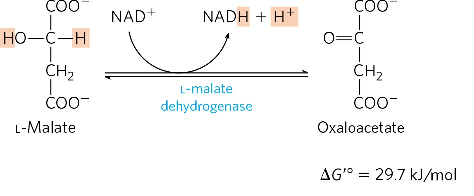
- The cycle is named variously as citric acid cycle or tri-carboxylic acid cycle (TCA cycle), because citric acid is the starting compound of the cycle and citric acid as well as many other intermediate acids contain 3-carboxylic groups.
- It was discovered by an English biochemist, Sir Hans Adolf Krebs in 1937.
- The whole process of Krebs cycle occurs inside in the matrix of mitochondria in Eukaryotic cells.
- The purpose of Krebs cycle is to collect high energy electrons from fuels like glucose derivatives, fatty acids and amino acids by oxidizing them, which are transported by activated carriers NADH and FADH2 to the electron transport chain.
- It is responsible for the major share of energy release and supply during aerobic respiration.
- Krebs cycle is also the source for the precursors of many other molecules, and is therefore an amphibolic pathway (both catabolic and anabolic pathway).
- This process oxidizes glucose derivatives, fatty acids and amino acids to carbon dioxide (CO2) through a series of enzyme controlled steps.
1. Formation of citrate from acetyl CoA:
-
- Acetyl CoA is the connecting link between glycolysis and Krebs cycle.
- Carbohydrates, fats and proteins are catabolized by separate pathways to form Acetyl-coA which reacts with oxaloacetic acid with the use of one molecule of water to form a 6-carbon molecule of citric acid or citrate.
- This reaction occurs in the presence of an enzyme citrate synthase with the liberation of CoA.
2. Formation of Isocitrate via cis-Aconitate:
-
- Citric acid is dehydrated (loses one molecule of water) to form an intermediary compound, cis-aconitic acid or cis-aconitate in the presence of an enzyme aconitase.
- Cis-aconitic acid is hydrated with one molecule of water to form iso-citric acid or isocitrate. This reaction is catalyzed by the enzyme aconitase (formally, aconitate hydratase), which can promote the reversible addition of H2O to the double bond of enzyme-bound cis-aconitate in two different ways, one leading to citrate and the other isocitrate.
3. Oxidation of isocitrate to α-ketoglutarate and CO2:
-
- Iso-citrate is dehyrogenated to form oxalosuccinic acid in the presence of an enzyme isocitrate dehydrogenase. The released hydrogen pair is accepted by NAD to form NADH +H+.
- The 6-carbon oxalosuccinic acid is decarboxylated to form 5-carbon compound α-ketoglutarate and a molecule of CO2 in the presence of an enzyme decarboxylase.
4. Oxidation of α-ketoglutarate to succinyl CoA:
-
- α-ketoglutarate undergoes oxidative decarboxylation to form a 4-carbon compound Succinyl CoA catalyzed by α-ketoglutarate dehydrogenase complex.
- During this reaction, one molecule of CoA is used up, one molecule of CO2 is released and NAD+ is reduced to NADH+H+.
5. Conversion of Succinyl CoA to Succinate:
-
- Succinyl CoA is converted to succinic acid or succinate by the removal of CoA catalyzed by the enzyme succinic thiokinase or succinyl CoA synthetase.
- The energy released in this reaction is used in the synthesis of guanosine triphosphate (GTP) from GDP and inorganic phosphate (iP). This GTP reacts with ADp to form ATP.
6. Oxidation of Succinate to Fumarate:
-
- Succinic acid (Succinate) is oxidized to form Fumaric acid (Fumarate) in the presence of a flavoprotein enzyme, Succinate dehydrogenase.
- The released hydrogen atoms are accepted by FAD (Flavin adenine dinucleotide) to form FADH2.
7. Hydration of fumarate to malate:
-
- Fumarate reacts with H2O to form malic acid (L-malate) in the presence of enzyme fumarase (formally, fumarate hydratase). This is a reversible reaction.
- The transition state in this reaction is a carbanion.
8. Oxidation of Malate to Oxaloacetate:
-
- Finally, malate is oxidized to from Oxaloacetate in the presence of an enzyme malate dehydrogenase where NAD+ is reduced to NADH +H+.
- Oxaloacetate thus formed enters the cycle.
ATP Yield of Krebs cycle:
- Each molecule of acetyl CoA on complete oxidation through the Krebs cycle produces the following:
- Two CO2
- Three NADH
- One FADH2
- One GTP
- Because each NADH will eventually produce 2.5 ATP and each FADH2 will produce 1.5 ATP through the electron transport chain, the overall ATP yield from 1 acetyl CoA is 10 ATP(7.5 from NADH, 1.5 from FADH2, and 1 from GTP).








